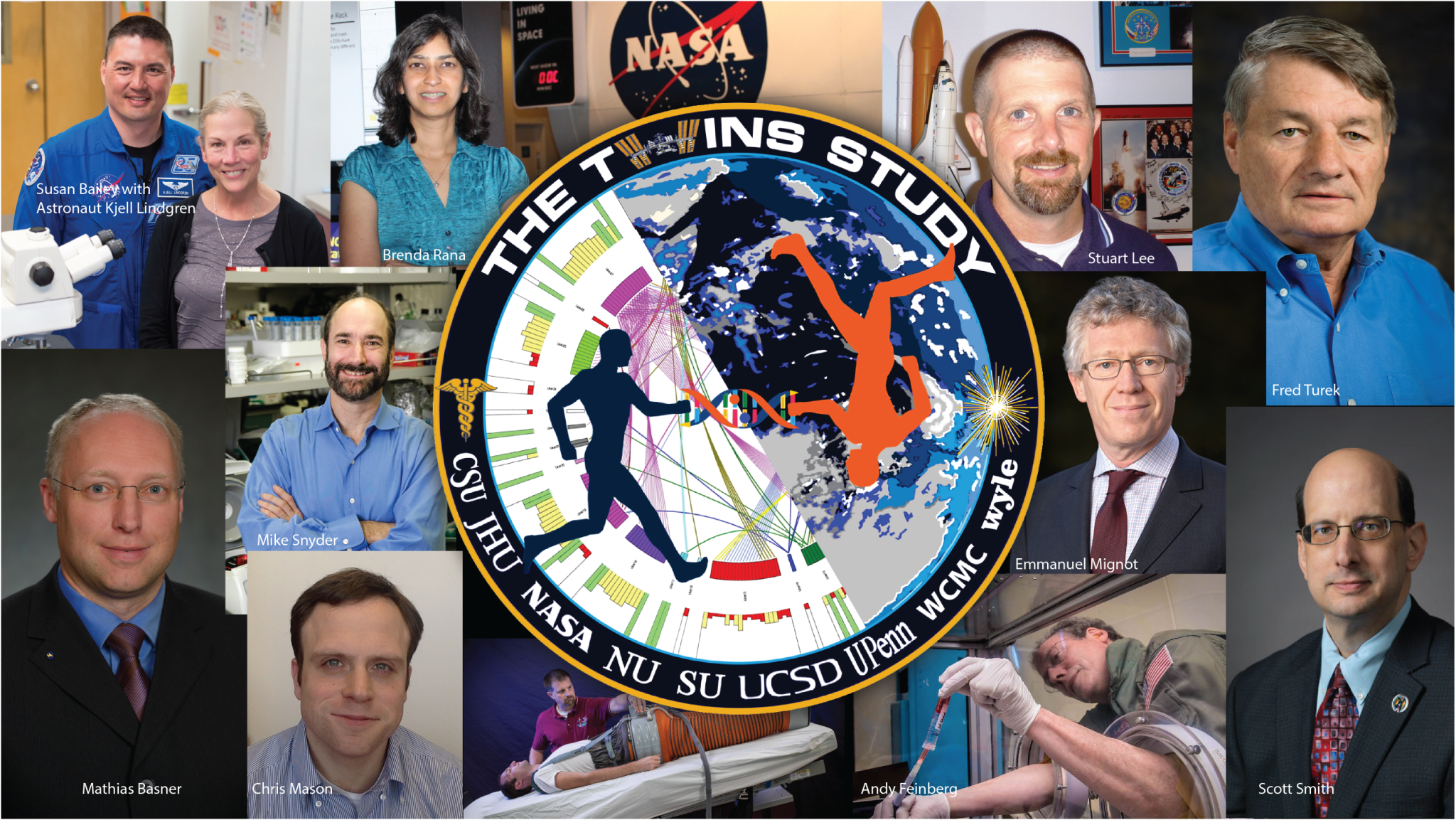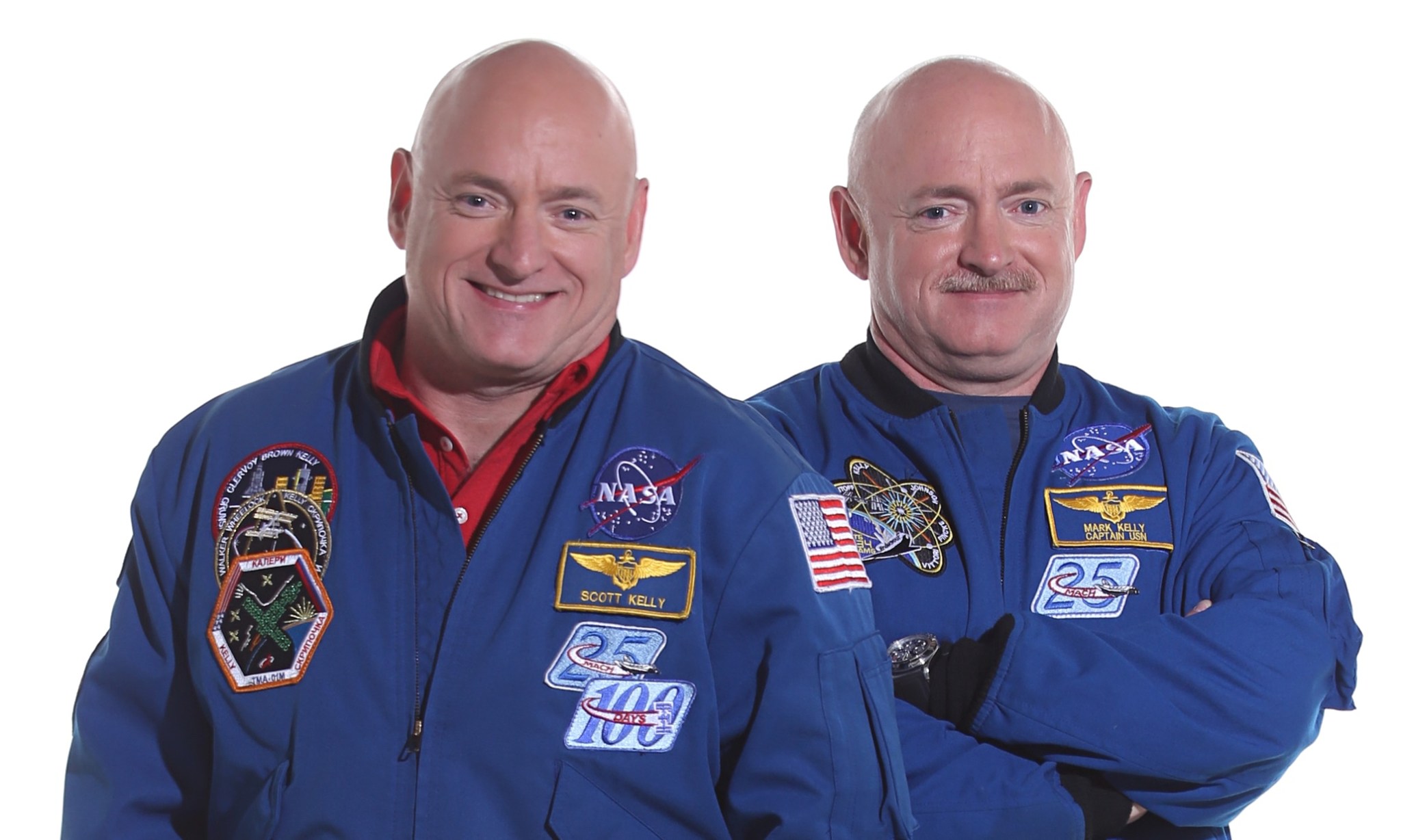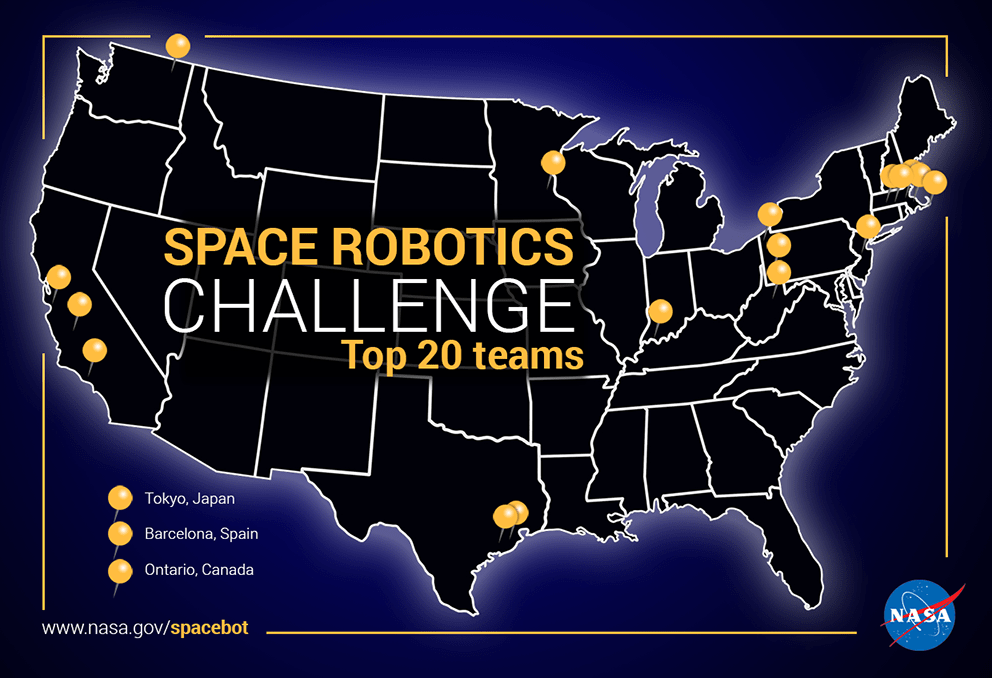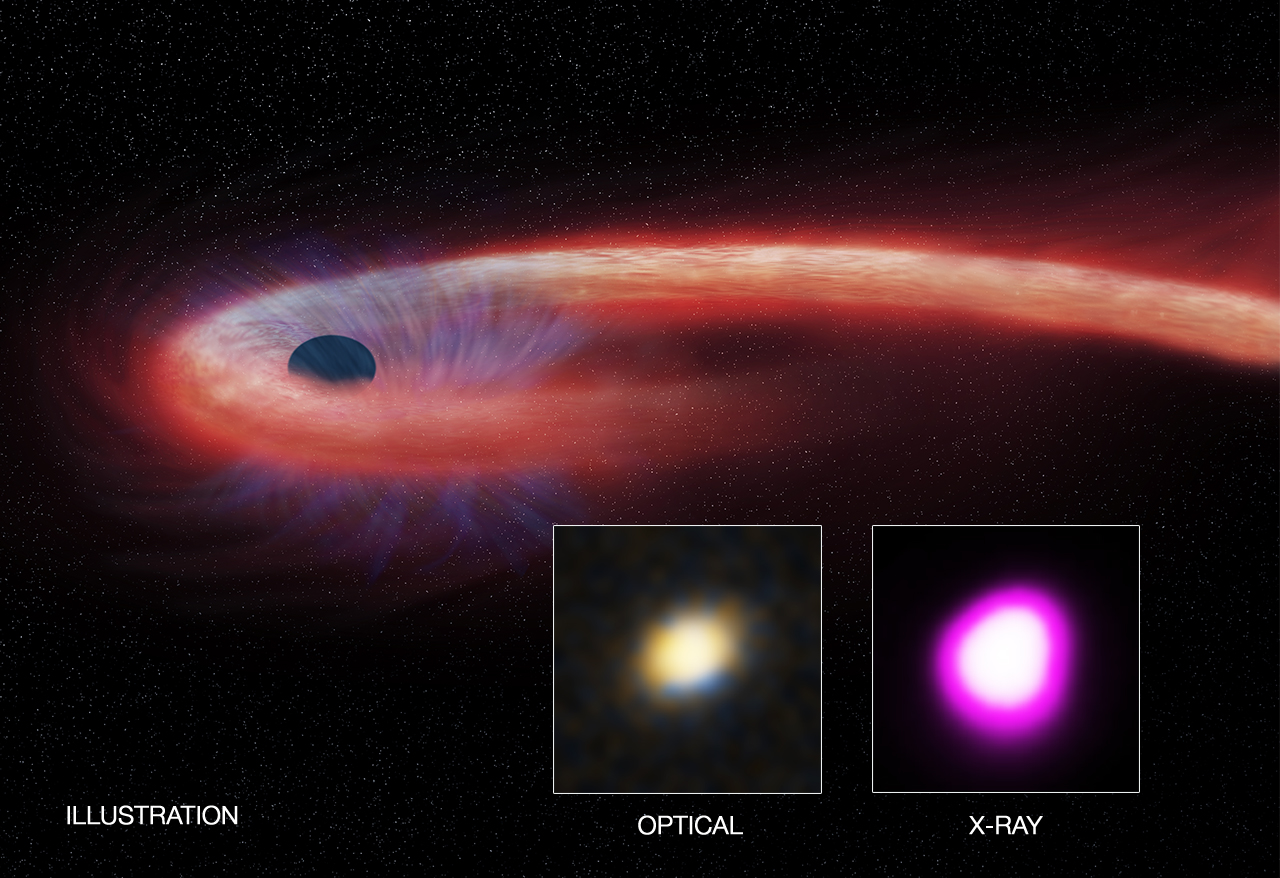In This Week’s Star
- Marshall’s Center Realignment Finalized Feb. 5
- How Stressful Will a Trip to Mars Be on the Human Body? A Peek into NASA Twins Study
- NASA Selects Top 20 Space Robotics Challenge Teams, Prepares for Final Stage of Competition
- Roaming Satellites Inside the Space Station Could Change How We Build Rockets
- Black Hole Meal Sets Record for Duration and Size
- Marshall Black History Panel to Discuss ‘the Crisis in Black Education’ Feb. 16
- This Week in NASA History: Final Crewed Skylab Mission Returns to Earth– Feb. 8, 1974
- Juno’s Latest Close Flyby of Jupiter Featured on ‘This Week @NASA’
- Obituaries
Marshall’s Center Realignment Finalized Feb. 5
By Brian C. Massey
After months of planning, NASA Marshall Space Flight Center’s realignment was formally enacted on Feb. 5 structuring the center organizations to be more agile and adaptive, according to Marshall Center Director Todd May. The most noticeable changes under the realignment plan are the creation of the Human Exploration Development and Operations Office and a consolidated Science and Technology Office.
The Human Exploration Development and Operations Office consists of the center’s work related to human development and operations, including the International Space Station, Commercial Crew Program, Commercial Cargo Program and Mission Operations.
The office — which consists of the Program Planning & Control Office, HP02; Exploration and Transportation Development Office, HP10; Mission Operations and Integration Division, HP20; and ISS Projects Office, HP30 — will focus on supporting customers at NASA’s Johnson and Kennedy Space Centers.
Bobby Watkins, who most recently served as the director of NASA’s Michoud Assembly Facility, has been appointed as the office’s director. “He brings a long history of leadership and management from across the agency,” said May. “He actually started at Johnson in the Mission Operations area, so he knows the customers very well. He’s been doing a great job at Michoud and I think he’s going to do a great job with HP.”
The Science and Technology Office keeps the same name, and will include all of the center’s technology work. Marshall’s work with advanced exploration systems, the Space Technology Mission Directorate, NASA’s Chandra X-ray Observatory and the Planetary Programs Office has been added to the newly consolidated STO.
“With technology, we want to be lean, fast and able to lean into issues and take more risks,” said May. “With the STO’s new structure, we believe we have created an environment to do just that.”
The office includes the Program Planning & Control Office, ST02; Partnerships & Formulation Office, ST03; Science Research and Projects Division, ST10; Exploration Technologies & Systems Development Division, ST20, Planetary Mission Program Office, ST30; and Technology Demonstration Mission Program Office, ST40. STO will serves as a headquarters-facing organization and include all of the center’s science, technology and formulation efforts.
David Burns, has been appointed as STO director. The U.S. Air Force Academy graduate served in the same capacity with the Missile Defense Agency’s Science and Technology Office before joining NASA in 2016. “An innovative leader, David has great relationships with our external customers,” said May. “I look forward to great things from him and STO.”
The realignment was organized in an effort to better align Marshall with the center’s interfaces with the agency and other NASA centers, to develop a clear formulation area to engage in the development of new activities, and to clarify Marshall’s roles and capabilities.
“The new structure positions us for the 21st century,” said May. “It is going to make us a stronger, more agile, more adaptive center for the future.”
To view the new charters for HEDO and STO, click here. For more information or to view May’s most recent all-hands meetings, visit the Director’s Corner on Inside Marshall.
Massey, an ASRC Federal/Analytical Services employee and the Marshall Star editor, supports the Office of Strategic Analysis & Communications.
How Stressful Will a Trip to Mars Be on the Human Body? A Peek into NASA Twins Study
After a year in orbit and nearly a year of initial analysis of the data, preliminary conclusions of the high-profile NASA Twins Study debuted at NASA’s Human Research Program’s annual Investigators’ Workshop in Galveston, Texas, the week of Jan. 23.
NASA astronaut Scott Kelly returned home March 2016 after nearly one year living and working in space on the International Space Station. His identical twin brother, Mark, remained on Earth, undergoing many of the same tests so scientists could do a direct comparison with two genetically identical humans.
Researchers found this to be a great opportunity for a nature versus nurture study, thus the Twins Study was formed. Using Mark, a retired NASA astronaut, as a ground-based control subject, 10 researchers are sharing biological samples and data taken from each twin before, during and after the mission. From these samples, knowledge is being gained as to how the body is affected by extended time in space.
These studies are far from complete. Additional research analysis is in process, but here are some initial highlights.
Principal investigator for the Integrated Omics investigation, Mike Snyder, a professor at Stanford University in California, has reported altered levels of a panel of lipids in Scott that indicate inflammation. Additionally, there was an increased presence of the metabolite 3-indolepropionic in Mark. This metabolite is known to be produced only by bacteria in the gut and is being investigated as a potential brain antioxidant therapeutic. It is also known to help maintain normal insulin activity to regulate blood sugar after meals.
Susan Bailey, an associate professor at Colorado State University in Fort Collins leads an investigation of the brothers’ Telomeres and Telomerase. It is understood that when looked at over many years, telomeres decrease in length as a person ages. Interestingly, on a time scale of just one year, Bailey has found Scott’s telomeres on the ends of chromosomes in his white blood cells increased in length while in space. This could be linked to increased exercise and reduced caloric intake during the mission. However, upon his return to Earth they began to shorten again.
In the Biochemical Profile investigation, headed by Scott Smith, a scientist at NASA’s Johnson Space Center, there appears to be a decline in bone formation during the second half of Scott’s mission. The stress hormone cortisol was low-to-normal throughout the one-year mission, but IGF-1 hormone levels increased over the course of the year. This hormone is implicated with bone and muscle health and was likely impacted by heavy exercise countermeasures during flight.
The Immunome Studies investigation, led by Emmanuel Mignot, a professor at Stanford University in Palo Alto, California, is looking at changes in the body before and after a flu vaccine was administered to each twin. Following flu vaccines, “personalized” T cell receptors were created. These unique T cell receptors increased in both twins which was the expected immune response that protects from catching the flu.
Chris Mason, an associate professor at Weill Cornell Medical College in New York, is performing Genome Sequencing on the DNA and RNA contained within the twins’ white blood cells with his investigation. Whole genome sequencing was completed and showed each twin has hundreds of unique mutations in their genome, which are normal variants. RNA sequencing showed more than 200,000 RNA molecules that were expressed differently between the twins. They will look closer to see if a “space gene” could have been activated while Scott was in space.
Through further research integrating these preliminary findings, in coordination with other physiological, psychological, and technological investigations, NASA and its partners will continue to ensure astronauts undertake future space exploration missions safely, efficiently and effectively. A joint summary of the 10 investigations is planned for publication later in 2017, to be followed by individual investigator research articles.
More of the initial results from the Twins Study are available here.
NASA Selects Top 20 Space Robotics Challenge Teams, Prepares for Final Stage of Competition
By Janet Sudnik
NASA, in partnership with Space Center Houston — the official visitor center of NASA Johnson Space Center — and NineSigma, a global innovation consultant organization, has selected the top 20 teams in the Space Robotics Challenge. Eligible teams will be awarded $15,000 and advance to the final Virtual Competition, which will take place in June.
The Space Robotics Challenge, part of NASA’s Centennial Challenges program, is a $1 million prize competition to develop the capabilities of humanoid robot dexterity to better enable them to work alongside and independent of astronauts in preparation for future space exploration. The finalists were selected from a pool of 92 teams from 13 countries.
“We are thrilled to have such a huge community of solvers respond to this challenge, and we congratulate the finalists,” said Monsi Roman, Centennial Challenges program manager. “The technology they are developing and testing for robotic systems will be essential to helping our human explorers.”
The Top 20 teams, in alphabetical order, are:
- BIT PLEASE – Cypress, Texas
- Coordinated Robotics – Newbury Park, California
- Mingo Mountain Robotics — Kettle Falls, Washington
- MITs — Tokyo, Japan
- Mystic — The Woodlands, Texas
- Nevermore — Jersey City, New Jersey
- Ring of the Nibelungs — Medford, Massachusetts
- Sirius — South Hadley, Massachusetts
- SpaceBucs — Pittsburgh, Pennsylvania
- Space Weavers — San Jose, California
- Team AL v.2.0 — Toronto, Ontario, Canada
- Team Olympus Mons — Barcelona, Spain
- Team Olrun — Evansville, Indiana
- THE HUMANZ ARE DEAD — Boston, Massachusetts
- Walk Softly — Erie, Pennsylvania
- Whalers — Nantucket, Massachusetts
- Worcester Polytechnic Institute Humanoid Robotics Lab — Worcester, Massachusetts
- WV Robotics Team — Fairmont, West Virginia
- Xion Systems — Fresno, California
- ZARJ — St. Paul, Minnesota
The final competition will be held in a virtual environment, where teams must program a virtual robot, modeled after NASA’s humanoid Robonaut 5 robot, to complete a series of tasks in a simulation that includes periods of latency to represent the communications delay from Earth to Mars.
Each team’s Robonaut 5 will be challenged with resolving the aftermath of a dust storm that has damaged a Martian habitat. This involves three objectives — aligning a communications dish, repairing a solar array and fixing a habitat leak.
NASA’s Centennial Challenges program is part of the agency’s Space Technology Mission Directorate, and is managed at NASA’s Marshall Space Flight Center. STMD uses challenges to gather the best and brightest minds in academia, industry and government to drive innovation and enable solutions in important technology focus areas.
Space Center Houston is a part of the Manned Space Flight Education Foundation, a nonprofit science and space learning center.
NineSigma, based in Cleveland, Ohio, connects organizations with external innovation resources to accelerate innovation in private, public and social sectors.
Sudnik, an ASRC Federal/Analytical Services employee, supports the Office of Strategic Analysis & Communications.
Roaming Satellites Inside the Space Station Could Change How We Build Rockets
By Bill Hubscher
Crew members on the International Space Station are giving the Synchronized Position Hold, Engage, Reorient, Experimental Satellites a thorough workout with three different investigations.
European Space Agency astronaut Thomas Pesquet began performing maneuvers with SPHERES Jan. 31, to study fluid motions in a microgravity environment as part of the SPHERES Slosh investigation. Pesquet observed bubble formation in tanks with varying amounts of liquid inside to study liquid settling and reaction force physics. As the bowling-ball-sized satellite moves around the lab, sensors can measure how the fluid moves in the slosh tank.
This study explores the motion of liquids in a tank in microgravity, collecting data that will improve the safety and efficiency of future rockets. Many satellites launch on rockets powered by liquid fuel, and improved understanding of these propellants could potentially lower costs for launches. More generally, the investigation’s results provide new data for fluid dynamics simulations.
The following day, Pesquet tied a pair of satellites together for the SPHERES Tether Demonstration. Space debris colliding with orbiting objects — such as satellites or crewed spacecraft — is a danger. Catching and removing such debris can eliminate this threat. The SPHERES Tether Demonstration studies the dynamics of a tether capture and “space tug” in the controlled microgravity environment of the space station.
For this investigation, two SPHERES are tied together and data are collected as they move through a series of programs, with one as the chase vehicle and the other as the target. The ground team assessed the effect of the tether material choice and the tension, forces and torques between the two satellites. The results of this investigation can improve computer programs needed for removing space debris, recovering stray items during spacewalks or capturing satellites for repair. It could also be used to capture scientific samples on other planets.
NASA astronaut Shane Kimbrough joined Pesquet toward the end of the week to perform two sessions of the SPHERES Halo investigation. Currently, almost all spacecraft are completely assembled and tucked into a rocket fairing for launch into space, which limits the size and weight of objects that can be directly sent to orbit. This investigation studies the possibility of launching several separate components and then attaching them once they are in space. The investigation upgrades the space station’s fleet of SPHERES to enable each SPHERE to communicate with six external objects at the same time, testing new control and remote assembly methods.
Retired, obsolete or failed satellites currently cannot be accessed for repair, and wind up as space debris. Results from the SPHERES Halo investigation also can address remote or autonomous servicing of these spacecraft. In addition, future space habitats, large telescopes or exploration vehicles may be too difficult and costly to launch from Earth, and may instead be completed in orbit. The SPHERES Halo investigation improves research methods for computer systems that would control space-based repairs and constructions. Computer programs developed through the Halo investigation could be applied to robotics on the ground, including robots that can form a swarm and work together to accomplish a single task.
For the latest discoveries being made on station, check out the Space Station Research & Technology webpage or follow @ISS_Research on Twitter.
Hubscher, an ASRC Federal/Analytical Services employee, supports the Office of Communications.
Black Hole Meal Sets Record for Duration and Size
A giant black hole ripped apart a star and then gorged on its remains for about a decade, according to astronomers. This is more than ten times longer than any observed episode of a star’s death by black hole.
Researchers made this discovery using data from NASA’s Chandra X-ray Observatory and Swift satellite as well as ESA’s XMM-Newton.
The trio of orbiting X-ray telescopes found evidence for a tidal disruption event, wherein the tidal forces due to the intense gravity from a black hole can destroy an object — such as a star — that wanders too close. During a TDE, some of the stellar debris is flung outward at high speeds, while the rest falls toward the black hole. As it travels inwards to be ingested by the black hole, the material heats up to millions of degrees and generates a distinct X-ray flare.
“We have witnessed a star’s spectacular and prolonged demise,” said Dacheng Lin from the University of New Hampshire in Durham, who led the study. “Dozens of tidal disruption events have been detected since the 1990s, but none that remained bright for nearly as long as this one.”
The extraordinary long bright phase of this event spanning over 10 years means that among observed TDEs this was either the most massive star ever to be completely torn apart during one of these events, or the first where a smaller star was completely torn apart.
The X-ray source containing this force-fed black hole, known by its abbreviated name of XJ1500+0154, is located in a small galaxy about 1.8 billion light years from Earth.
The source was not detected in a Chandra observation on April 2, 2005, but was detected in an XMM-Newton observation on July 23, 2005, and reached peak brightness in a Chandra observation on June 5, 2008. These observations show that the source became at least 100 times brighter in X-rays. Since then, Chandra, Swift and XMM-Newton have observed it multiple times.
The sharp X-ray vision of Chandra data shows that XJ1500+0154 is located at the center of its host galaxy, the expected location for a supermassive black hole.
The X-ray data also indicate that radiation from material surrounding this black hole has consistently surpassed the so-called Eddington limit, defined by a balance between the outward pressure of radiation from the hot gas and the inward pull of the gravity of the black hole.
“For most of the time we’ve been looking at this object, it has been growing rapidly,” said co-author James Guillochon of the Harvard-Smithsonian Center for Astrophysics in Cambridge, Massachusetts. “This tells us something unusual — like a star twice as heavy as our sun — is being fed into the black hole.”
The conclusion that supermassive black holes can grow, from TDEs and perhaps other means, at rates above those corresponding to the Eddington limit has important implications. Such rapid growth may help explain how supermassive black holes were able to reach masses about a billion times higher than the sun when the universe was only about a billion years old.
“This event shows that black holes really can grow at extraordinarily high rates,” said co-author Stefanie Komossa of QianNan Normal University for Nationalities in Duyun City, China. “This may help understand how precocious black holes came to be.”
Based on the modeling by the researchers the black hole’s feeding supply should be significantly reduced in the next decade. This would result in XJ1500+0154 fading in X-ray brightness over the next several years.
A paper describing these results appeared in the Feb. 6 issue in Nature Astronomy and is available online. NASA’s Marshall Space Flight Center manages the Chandra program for NASA’s Science Mission Directorate. The Smithsonian Astrophysical Observatory controls Chandra’s science and flight operations.
Marshall Black History Panel to Discuss ‘the Crisis in Black Education’ Feb. 16
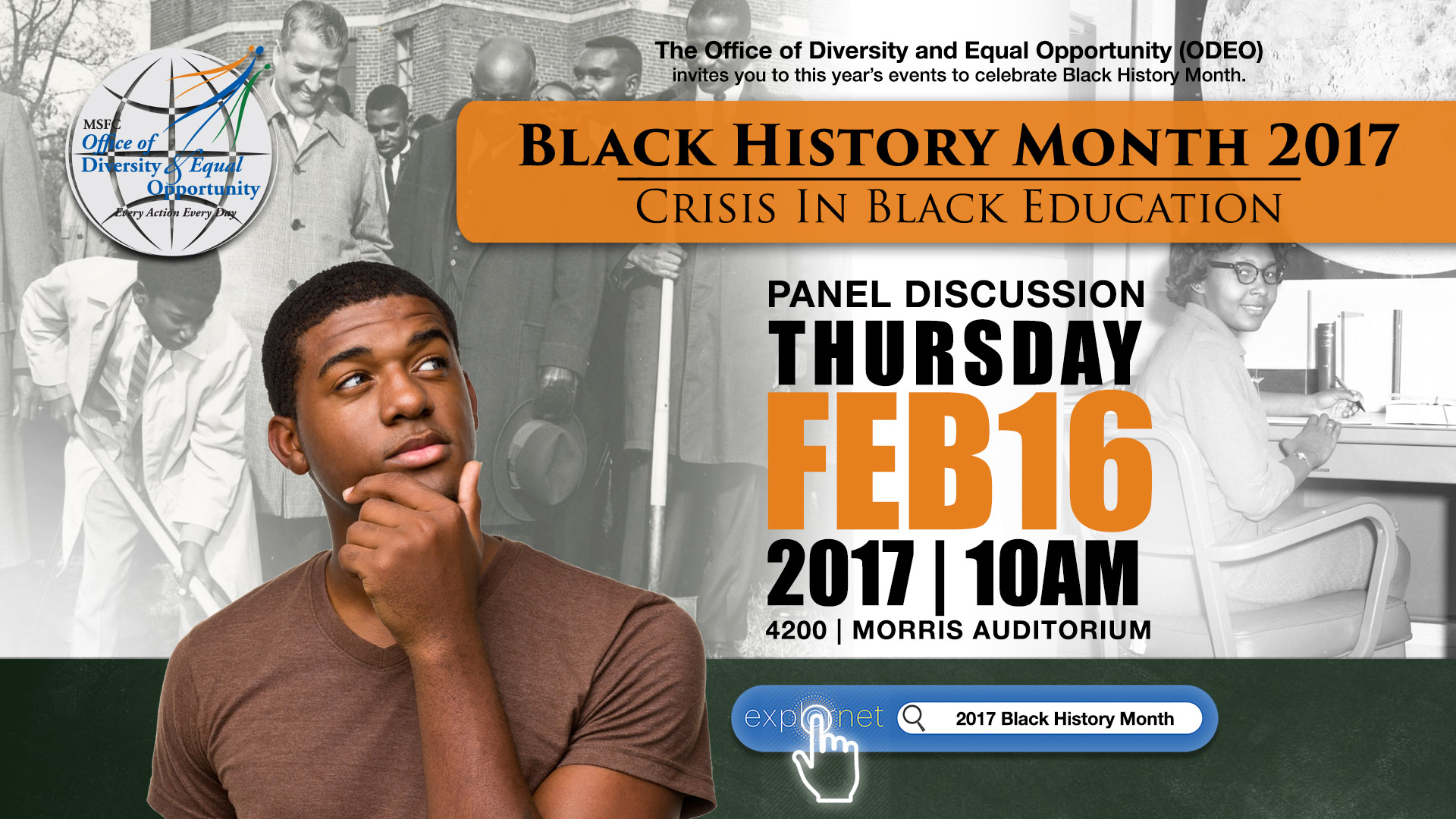
NASA’s Marshall Space Flight Center will host a panel discussion at 10 a.m. Feb. 16 in Morris Auditorium, Building 4200, to celebrate Black History Month. Moderated by John Meredith, the president and CEO of Meredith Advocacy, the panel will include Marshall Scientist Emeritus Donald Frazier and educators and administrators from historically black universities Morgan State in Baltimore, and Alabama A&M in Normal. The panel will discuss the Association for the Study of African American Life and History’s 2017 theme, “the Crisis in Black Education,” a topic that is also the focus of a month-long display in the lobby of Building 4200. Following the panel discussion, a sample of ethnic food will be available from 11:30 a.m. to 1 p.m. in Room P110, Building 4200. The panel discussion and food sampling are sponsored by Marshall’s Office of Diversity and Equal Opportunity, which strives to promote diversity, equality and inclusion for all individuals, while providing a workplace that is free from discrimination, including harassment and retaliation. The lobby display is a collaboration of ODEO and Marshall’s Office of Strategic Analysis and Communications. (NASA/MSFC)
This Week in NASA History: Final Crewed Skylab Mission Returns to Earth– Feb. 8, 1974
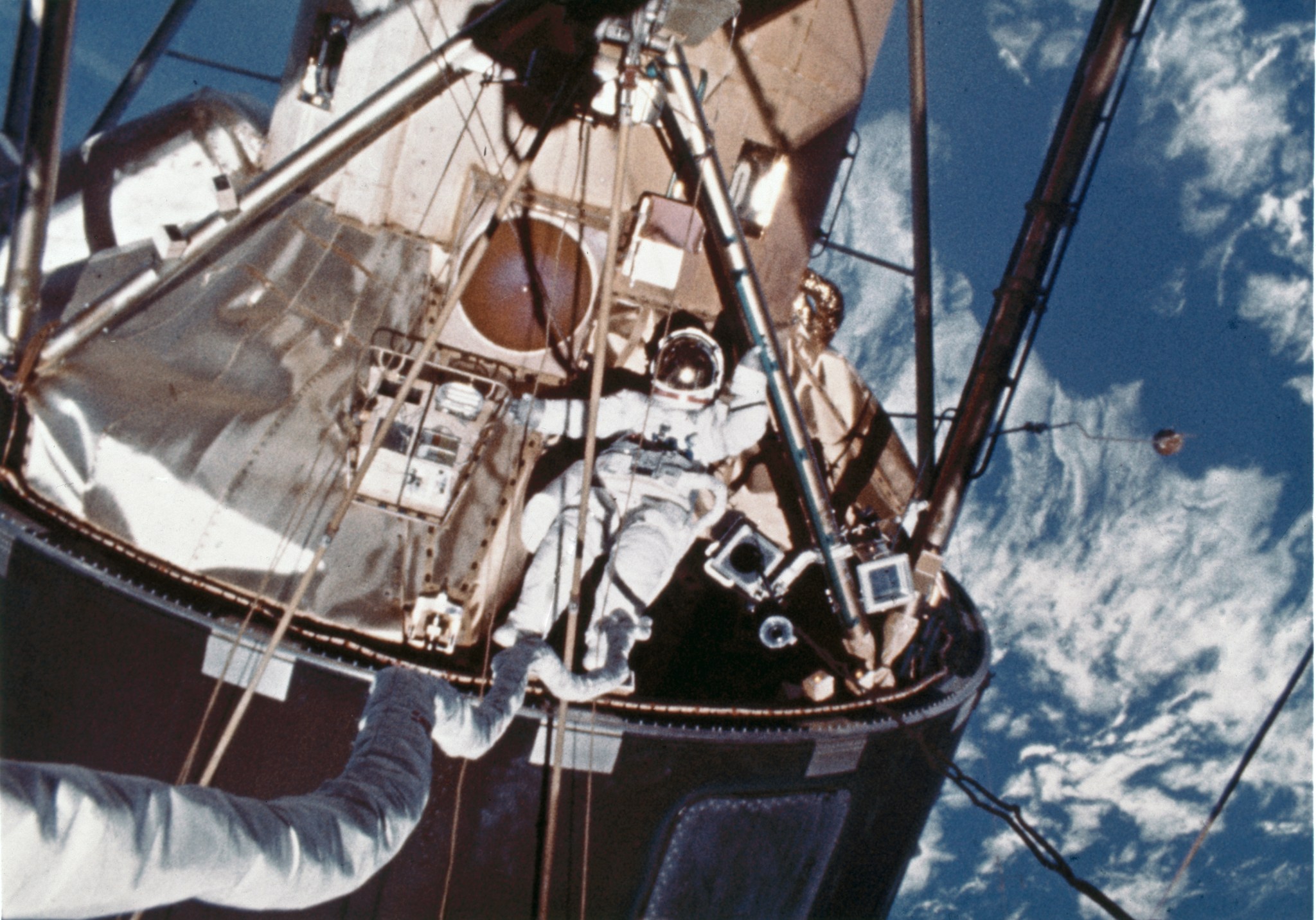
This week in 1974, after a successful 84-day mission, the third crewed Skylab mission crew returned to Earth. In this image, a crew member performs extravehicular activity outside the orbiting lab. NASA’s Marshall Space Flight Center provided the Saturn launch vehicles for the four Skylab missions and directed many of the space station’s experiments. Today Marshall’s Payload Operations Integration Center serves as “science central” for the International Space Station, working 24/7, 365 days a year in support of the orbiting laboratory’s scientific experiments. The NASA History Program is responsible for generating, disseminating, and preserving NASA’s remarkable history and providing a comprehensive understanding of the institutional, cultural, social, political, economic, technological, and scientific aspects of NASA’s activities in aeronautics and space. For more pictures like this one and to connect to NASA’s history, visit the Marshall History Program’s webpage. (NASA)
Juno’s Latest Close Flyby of Jupiter Featured on ‘This Week @NASA’
A close flyby of Jupiter by NASA’s Juno spacecraft is featured in the latest edition of “This Week @NASA,” a weekly video program broadcast nationwide on NASA-TV and posted online.
Juno made its latest close flyby of Jupiter Feb. 2 — passing about 2,700 miles above the planet’s clouds. This was the fourth close flyby since the spacecraft began orbiting Jupiter on July 4, 2016. During these close passes instruments on the spacecraft probe beneath the cloud cover to collect scientific data about the planet’s structure, atmosphere and magnetosphere. This information could help better understand the planetary systems being discovered around other stars.
Juno is part of NASA’s New Frontiers Program, which is managed at NASA’s Marshall Space Flight Center for NASA’s Science Mission Directorate.
View this and previous episodes at “This Week @NASA” on NASA’s YouTube page.
Obituaries
Richard E. Black Sr., 82, of Arab, Alabama, died Jan. 29. He retired from the Marshall Center in 1989 as an aerospace engineer.
Lillian O. Shahan, 83, of Huntsville, died Feb. 1. She retired from the Marshall Center in 1979 as a secretary.




























